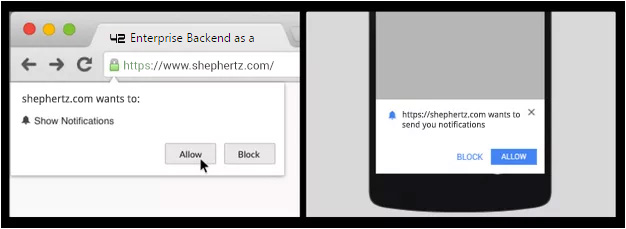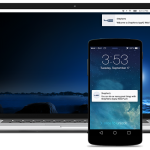Ever since mobile apps disrupted our world with unlimited opportunities and facilities, push notification quickly became the ultimate tool to target, engage and retain customers. With every organization—big or small—expanding their digital presence, it became necessary to stand out in the crowd because of cut throat competition. While the customers started getting distracted with endless options, marketers started becoming smarter with their usage of push notifications. But in the process, people mistakenly ignored web and utilization of same tools—that gave them success on mobile apps—on it.
People almost assumed web was dead. Almost. Until recently.
As shocking as it may sound, during the time mobile grew rapidly, web kept growing in the backyard without making any noise. A recent study revealed that the time spent on desktop web has grown 37% since 2011. Even mobile web isn’t left behind, the users of web on mobile are twice than that of mobile apps. As soon as people found out, they realized the success of push notifications on mobile had to be carry forwarded on websites. Because emails and smses were becoming the old way of grabbing the users’ attention, they had to bring in web push.
And, that they did. In came web push notifications. The power and force of push notifications on websites.
What exactly is Web Push and how should you use it?
Ever wondered how you are always notified whenever someone does any activity related to you on Facebook on the bottom right of your web browser? Yeah, that’s exactly what web push is. As soon as you open certain websites, an opt-in box for push notifications is triggered giving you the option of either allowing or blocking web push. Once you click on allow, you are added to the subscribers list and you start getting a notification on bottom right of your screen from that website any time they want to, regardless of the fact that you are on their website or not. If your desktop is in sleep or hibernate mode, as soon as you log on, the notifications will be waiting for you. Here is how it looks on Chrome

There are a lot of features & benefits in web push that can help you grow your business and target the right users at the right time:
- No Expenditure in Mobile Apps: Because web push works both on desktop and mobile web, there is no cost of building and hosting mobile apps at all. All you have to do is integrate a small code in your website, setup your campaign, work on a smart copy and get started. There are many organizations that still depend on websites rather than apps and are even benefiting from this strategy. Since email and sms thing is getting old, nothing works better than a smart web push.
- Ability to Add Channels: The greatest thing about triggering the opt-in box to the user to click on allow or block is that you can enable them to choose the channels they would like to subscribe to instead of opting for all the notifications. Like for a news website, they may want to receive only alerts on entertainment or politics. Or for a website that allows people to book tickets to events and shows, the users can opt-in for movies or shows of a particular genre or just concerts or plays—the possibilities are just endless.
- User Segmentation: In addition to enabling the users to choose channels, you can also segment them according to their demographics, behavior, activities, device type, etc. This further enhances your targeting and increases the conversion of your push messages up to 75%. Suppose a multinational organization wants to send a certain web push only to citizens living in Czech Republic, or a content marketer wants to target only those users that have not read the recent blog posts or an e-commerce website wants to send web push only to females alerting them about a particular sale on dresses.
- Push Automation: It is difficult to send out web push manually every time your user does any desired event. With the ability of marketing automation tools, you can create events that you consider are important and you may go ahead and create campaigns based on those events. This way your user gets a push notification automatically to let you focus on other activities. For example, a sports website may send out a web push just an hour before the match to remind the user to quickly get directed to the live scores on the website. Pairing with segmentation, a ticket booking brand can create a segment of users interested in the movies of a particular actor and can send out a web push a day before the release of the movie starring them.
- Higher Conversion Rate: Unlike in mobile, where so many apps are fighting out to grab your attention with so many notifications until it gets annoying and you deliberately opt-out, in web you have users who actually are interested in your alerts. The greatest advantage you have is the opt-in trigger that asks users if they are interested in your content—the number that clicks on allow may not be that great but that number will read your notification every time you send out one. Smart way is not to misuse it and work on the copy of the notification because content is the single thing that will either make or break your customer.
How can you get started?
Now that you are excited and are imagining all the great things you can do with web push, get started with ShepHertz App42 Platform to set up web push in your website and begin engaging your users. As of now App42 Web Push supports Chrome and Firefox and will soon roll out support for Safari, the steps to integrate in Chrome can be found here.
In case you have any whacky ideas, suggestions or issues and queries please feel free to reach out to at support@shephertz.com, our customer success team will be excited to connect with you.



















Leave A Reply